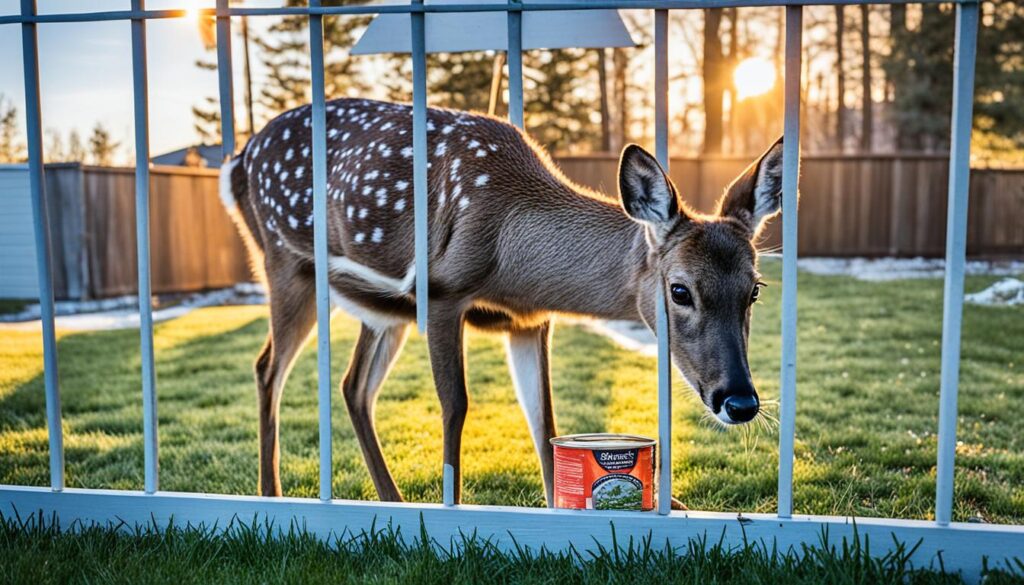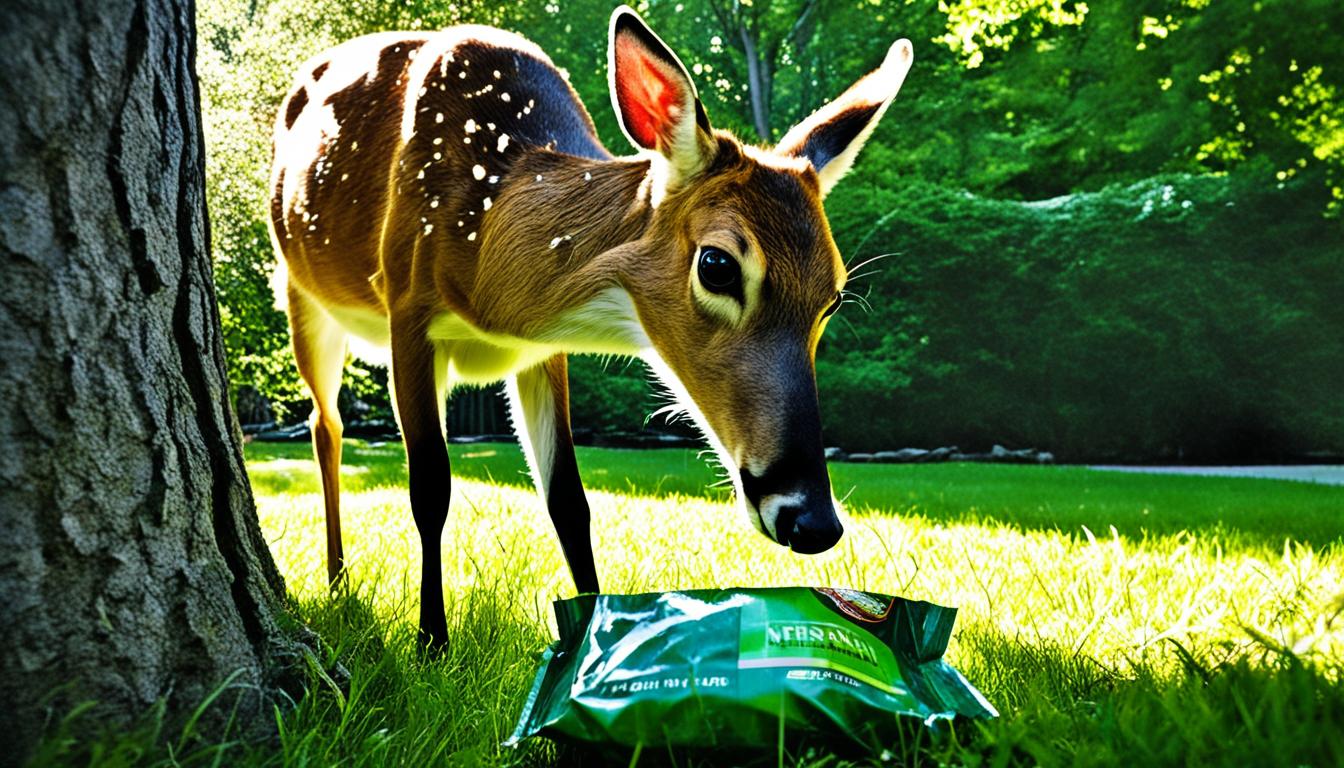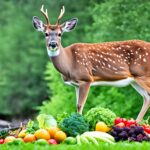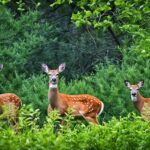When it comes to the eating habits of deer, it’s natural to wonder if they would consume dog food if given the chance. While deer have a diverse diet that primarily consists of browse, forbs, grasses, nuts, fruits, and mushrooms, there have been instances where they have been observed eating dog food. Although it may not be their preferred food source, deer are known to consume dog food if it is readily available to them.
Content Highlights
ToggleKey Takeaways:
- Deer will eat dog food if it is accessible, but it is not their preferred nutritional source.
- Feeding deer dog food can lead to habituation to human presence and potential conflicts with predators.
- There is a debate among individuals regarding the benefits and risks of feeding deer dog food.
- Veterinarians have mixed opinions on the matter, highlighting the importance of a balanced diet for optimal antler growth.
- Feeding deer and other wildlife can pose dangers such as the spread of diseases like chronic wasting disease and public safety concerns.
The Debate Surrounding Deer and Dog Food
Feeding deer dog food has sparked a heated debate among individuals. Advocates of feeding deer dog food argue that certain ingredients, such as calcium, can provide potential benefits, especially during the winter months and for antler growth. On the other hand, opponents contend that deer are herbivores and should not be exposed to a diet that includes meat-flavored dog food. The topic has garnered different opinions, including those of veterinarians who have weighed in on the matter.
“Feeding deer dog food may provide temporary benefits, but it is important to consider the potential risks involved,”
– Dr. Rachel Johnson, Wildlife Veterinarian
Some veterinarians caution against feeding deer dog food due to the risks involved and the importance of maintaining a balanced diet for optimal antler growth. The debate hinges on the potential benefits versus the potential detriments of incorporating dog food into a deer’s diet.
Potential Benefits of Feeding Deer Dog Food
Proponents of feeding deer dog food argue that certain ingredients can contribute to the welfare of the deer population. For instance, dog food may contain calcium, which is essential for antler growth and overall bone health. Additionally, the high protein content in dog food could provide an additional energy source during the winter months when natural food is scarce.
Risks of Feeding Deer Dog Food
Opponents of feeding deer dog food express concerns about the potential risks involved. Deer are natural herbivores, and introducing a meat-based product into their diet may disrupt their digestive system. Moreover, dog food typically contains ingredients that may not be suitable or healthy for deer, potentially leading to nutritional imbalances or digestive issues.
| Potential Benefits | Risks |
|---|---|
|
|
It’s important to note that the debate surrounding deer and dog food does not have a definitive conclusion. The decision to feed deer dog food should be made carefully, taking into account the potential benefits and risks involved. Consulting with wildlife experts or local authorities can provide further guidance on how to best support the well-being of deer in your area.

The Dangers of Feeding Deer and Wildlife
Feeding deer and other wildlife can pose several dangers and risks. It is important to understand the potential negative impacts before considering wildlife feeding as an option.
The Risks of Wildlife Feeding
Concentrating deer near inhabited areas can lead to increased human-wildlife conflicts. This includes traffic accidents caused by deer crossing roads and interactions with aggressive animals such as cougars. These encounters can present significant public safety concerns, putting both humans and wildlife at risk.
The Threat of Chronic Wasting Disease
Another significant risk associated with feeding deer is the potential spread of chronic wasting disease (CWD). CWD is a fatal transmissible disease that affects the nervous systems of deer, elk, and moose. It can be transmitted through environmental contamination, and feeding deer can cause them to congregate, increasing the risk of disease transmission. This poses a serious threat to wildlife populations and can have detrimental effects on the ecosystem as a whole.
The Consequences of Introducing Unnatural Foods
Feeding wildlife foods that are not natural to their diet can also harm them, particularly during winter when their nutritional needs are different. Introducing foods that deer and other wildlife are not accustomed to can disrupt their digestive systems and lead to nutritional imbalances. This can weaken their overall health and make them more susceptible to disease and other environmental stressors.
It is crucial to consider these dangers and risks before engaging in wildlife feeding activities. Public safety, disease prevention, and the well-being of wildlife should always be the top priorities.

| Dangers of Feeding Deer and Wildlife | Risks |
|---|---|
| Increased human-wildlife conflicts | – Traffic accidents – Interactions with aggressive animals |
| Spread of chronic wasting disease (CWD) | – Transmissible disease affecting deer, elk, and moose – Risk of disease transmission through feeding and congregation |
| Introducing unnatural foods | – Disrupting digestive systems – Nutritional imbalances – Weakened overall health |
Conclusion
From the available information, it is evident that while deer may consume dog food if it is accessible to them, it is not their preferred food source and may not provide them with the necessary nutritional benefits. Feeding deer and other wildlife can lead to unintended consequences, including habituation to human presence, an increased risk of conflicts, and the spread of diseases such as chronic wasting disease.
Therefore, it is recommended to avoid feeding deer and instead focus on preserving their natural habitat and providing them with appropriate food sources. Deer thrive on a diet consisting of browse, forbs, grasses, nuts, fruits, and mushrooms. By maintaining their natural food sources, we can support their well-being without disrupting their dietary requirements.
If you are unsure about the best practices for supporting the welfare of deer and other wildlife in your area, consulting with wildlife experts or local authorities can provide further guidance. They can offer valuable insights and suggestions to ensure that our actions align with the best interests of the deer population and their natural habitat.
- California Deer Hunting Guide: Seasons, Rules, Permits, and More - 26 June 2024
- Arkansas Deer Season 2024 [Schedules, Licenses, Bag Limits & More!] - 26 June 2024
- 2024 Arizona Deer Season New Dates & Rules! - 25 June 2024




